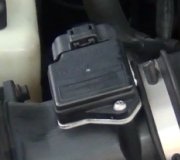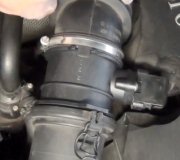2001 Buick Century 6 cyl Two Wheel Drive Automatic 81k miles
For the last month, each morning the car starts fine but for the first mile or 2 the car runs at idle ok but when try to go faster the engine sputter and won't speed up like it wasn't getting gas. After a few miles it clears up and the engine runs fine for the rest of the day no matter how many times, in that day, that I use the car.
The next morming it's the same thing all over again, some days I drove the car over 400 miles and it ran fine all day afer the usual problem when I first ran the car, as explained above.
I took the car to a repair garage the day before yesterday and the mechanic replaced the "mass air flow sensor". The car ran fine for the rest of that day. When I started it yesterday morning it was back to the same problem and as usual it cleared up after a mile or two and ran fine for the rest of the day. I took the car back to the mechanic last afternoon so he could again see the problem allow him to see what happens when the car if first started each morning. It was obvious that it was not the "mass air flow sensor".
Could you shed some light on this problem?
Sincerely,
Stan Ring
Friday, June 25th, 2010 AT 8:55 AM



